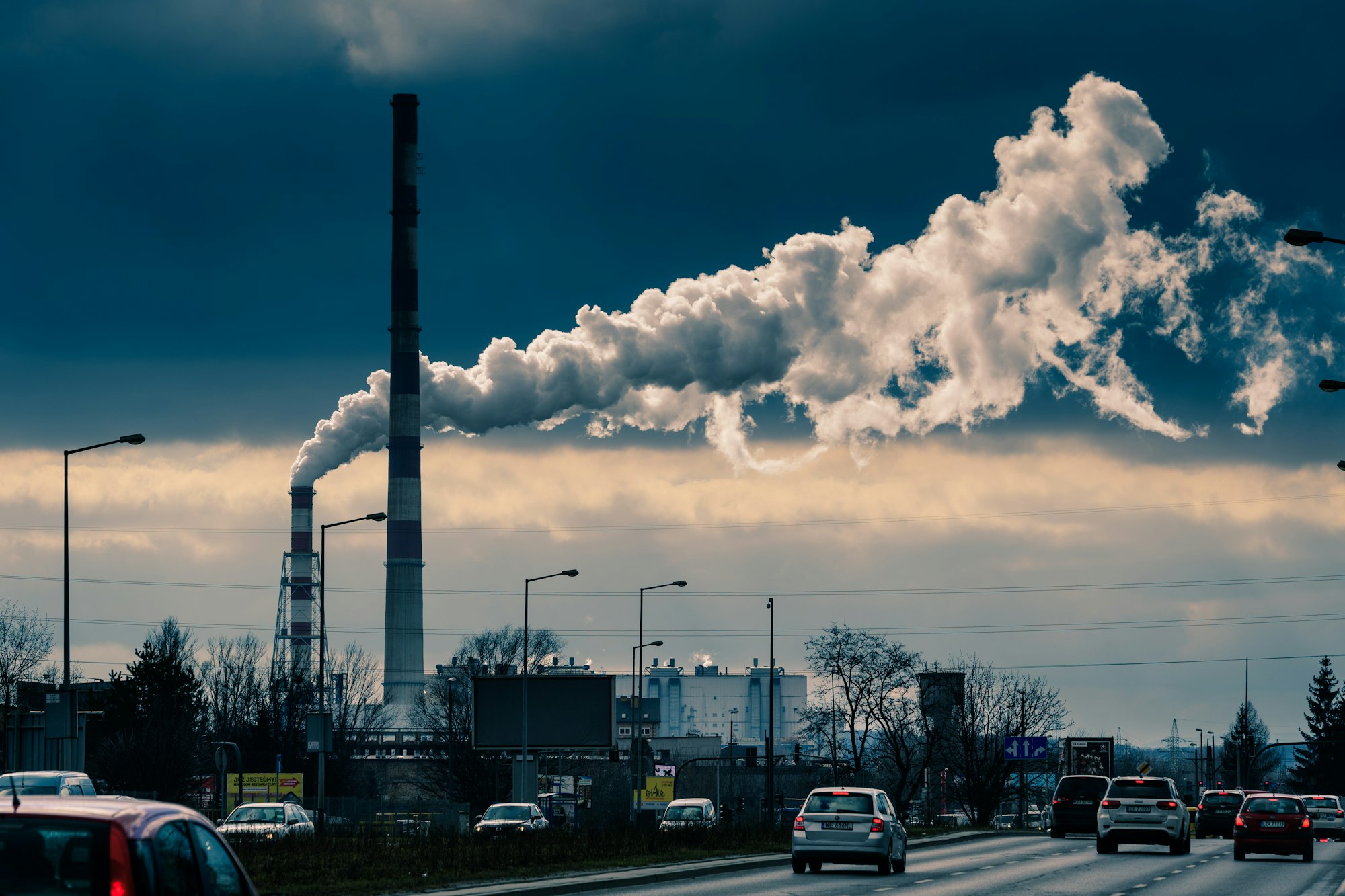Imagine a pre-Covid world. You've woken up, are making your way to work, and now you're stuck in a traffic jam! While this may seem far removed from our current way of life, authorities are rightly continuing the search for a long-term solution which will mitigate the pollution caused from congestion such as this. AI based solutions arise as candidates to help in this struggle.
The problem
Traffic jams are a major issue around the world, with congestion costing the UK economy an estimated £8bn each year [7]. The negative externalities extend beyond the financial as well with serious health implications. Pollution from these traffic jams contributes to the deaths of more than 50,000 people [1] and emissions of gases from vehicles, mainly nitrogen oxide (NO2), can cause respiratory problems such as asthma [8]. The pandemic has caused a decrease in the level of traffic, where 387 cities have experienced a lower volume of traffic on a year-on-year basis since 2019 due to lockdown containment measures [4]. However, measures must be planned for post the recovery.
The solution

The UK has planned to tackle this pollution problem by leveraging AI to power traffic lights which delay the arrival of vehicles in spots which exhibit a significant amount of air pollution.
By installing proprietary pollution monitors, telecommunications company Now Wireless has been able to collect and analyse the exact times and locations of hotspots with dangerous levels of pollution. These pollution monitors can predict pollution events an hour ahead with a 97% accuracy as shown in Figure 2 [2].

Using the locations identified by these monitors, Bluetooth sensors are then installed on routes with high pollution levels, providing more data to understand traffic such as journey times, weather, and CCTV across specific cities. The artificial intelligence algorithms gather insights from this data in real-time and predict a one hour ahead forecast. These figures are then sent to traffic light systems to mitigate this event by holding up drivers travelling towards the threatened area for up to 20 seconds longer than normal. Drivers traveling in other directions will naturally benefit from extended time in greener areas, eventually reducing civilian exposure to pollution. These changes happen automatically when the AI system forecasts a sharp jump in the level of pollution. The process may be summarised visually in Figure 1.
Current pollution monitors are dependent on chemiluminescent machines (which effectively “sniff” the air), which cost £50,000 to purchase and incur high maintenance costs each year, only lasting five years [6]. On the other hand, the AI system proposed by Now Wireless costs approximately £5,000 on initial purchase, with negligible annual running costs [6]. There is also no constraint on how long they can operate for.
The first trials of the system took place in Wolverhampton in 2020, with several other local authorities in discussions to consider implementing the technology.
Real-world impact
New technology developed by Now Wireless offers an alternative policy to vehicle bans and daily entry fees in the fight against road pollution. It also allows for preventative action rather than simply reacting to incumbent excessive pollution levels. There is a key risk in that this technology may simply shift pollution to new hotspots if the system is not implemented properly, holding up traffic and failing to alleviate the environmental issue. However, the high forecasting accuracy and wealth of data available for collection suggests that risks may be skewed to the upside. Furthermore, the AI system successfully captures journey time, which is the most significant factor in pollution management which experts have desired to have. While helping cities meet legal limits for nitrogen dioxide and other pollutive gases, the system may also have an ethical impact by reducing deaths caused by the particulates.
References
[1] AI traffic congestion research earns Future Leaders Fellowship
EurekAlert!, available at: https://www.eurekalert.org/pub_releases/2020-10/uoh-atc101520.php
[2] XanLabs, 2017. Detecting Pollution. Available at: https://static1.squarespace.com/static/5ac5efa845776e0c941a574a/t/5b0eb799575d1f5bd3752424/1527691219990/Xanlabs-pollution-technote.pdf
[3] Webster, B., 2020. AI will predict pollution surge and hold drivers on red to slow traffic. The Times. Available at: https://www.thetimes.co.uk/article/ai-will-predict-pollution-surge-and-hold-drivers-on-red-to-slow-traffic-phrjfv5hg
[4] TomTom Traffic Index, 2020. TomTom. Available at: https://www.tomtom.com/en_gb/traffic-index/
[5] Gov.UK, 2020. 10 March 2020: Air quality factsheet (part 4). Available at: https://www.gov.uk/government/publications/environment-bill-2020/10-march-2020-air-quality-factsheet-part-4
[6] Neill, P., 2020. Artificial Intelligence technology to predict air pollution spikes., 2020. Air Quality News.com. Available at: https://airqualitynews.com/2020/06/12/artifical-intelligence-technology-to-predict-air-pollution-spikes/
[7] Tute, Ryan., 2019. Congestion costing UK economy £8bn a year but solutions found locally, NIC say. Infrastructure Intelligence. Available at: http://www.infrastructure-intelligence.com/article/feb-2019/congestion-costing-uk-economy-£8bn-year-solutions-found-locally-nic-say
[8] EPA, 2020. Basic Information about NO2. United States Environmental Protection Agency. Available at: https://www.epa.gov/no2-pollution/basic-information-about-no2

